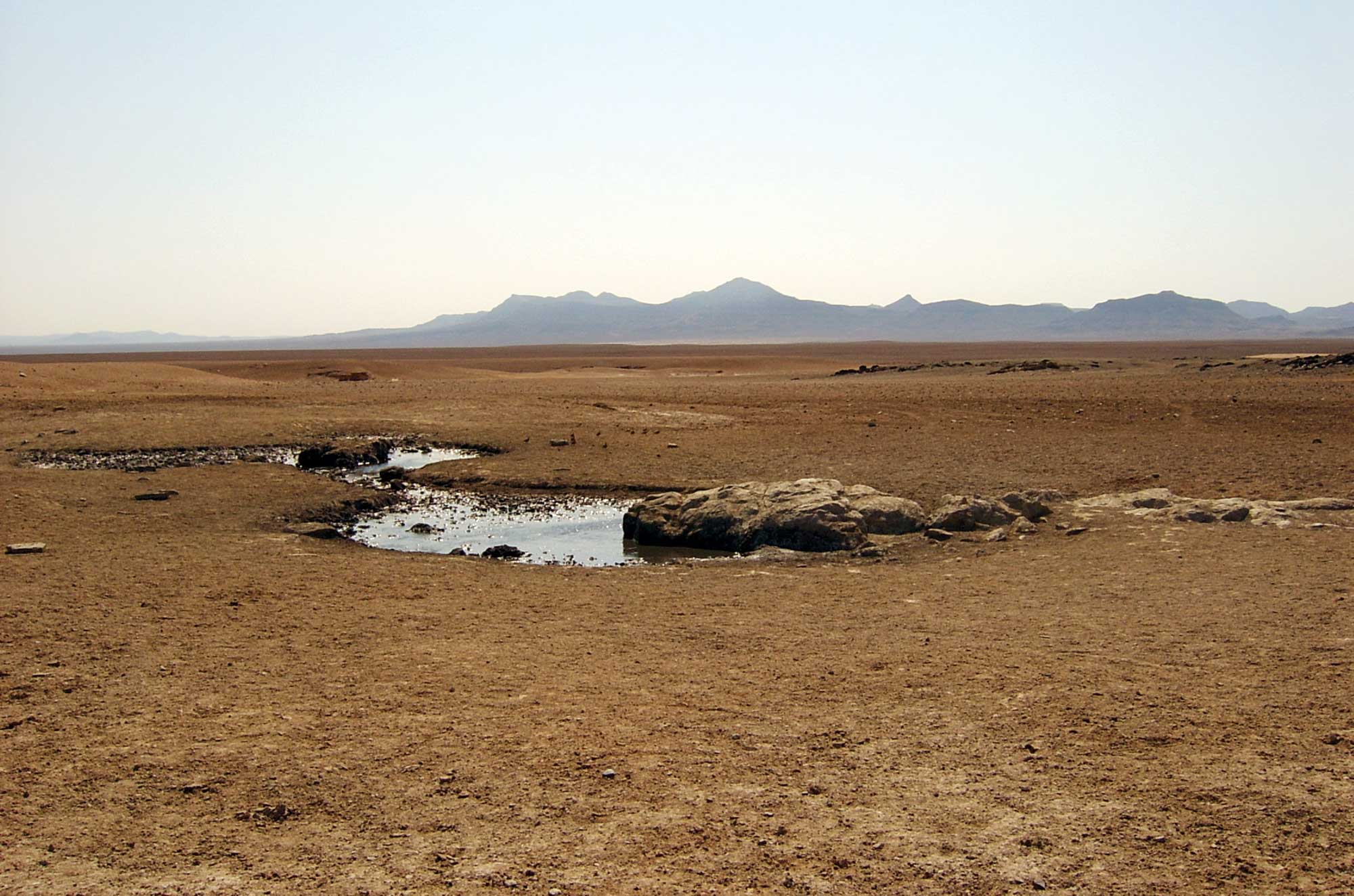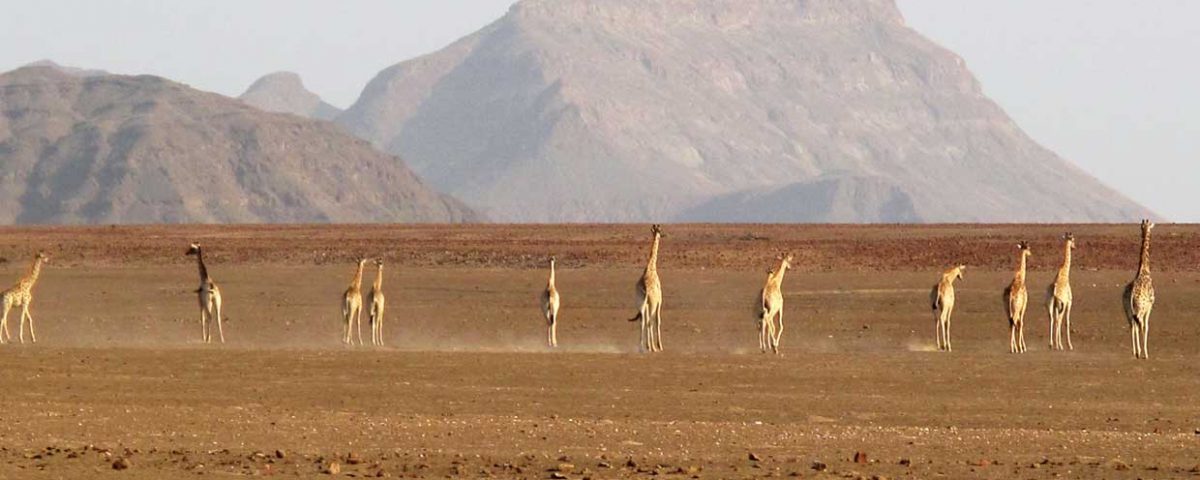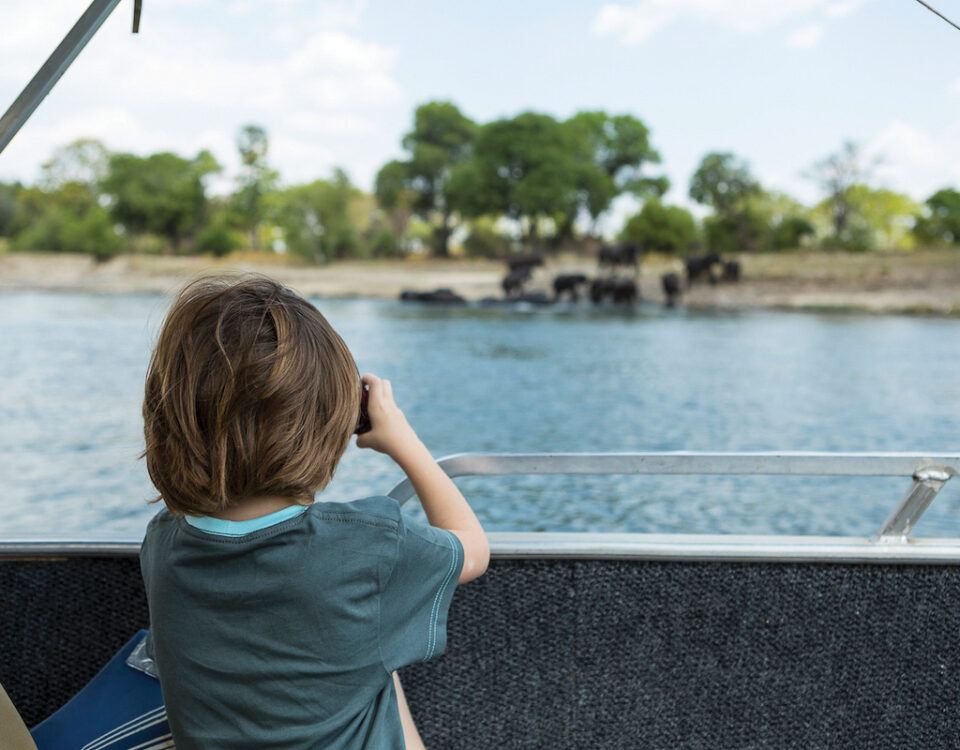
Last day eland
June 10, 2016
My unforgettable zebra hunt
June 13, 2016I t is midday, late October 2012. It is unbearably hot. Temperatures are already well over 40º Celsius. We have just reached the top of a mountain and the sweat is burning my eyes. The steep climb and loose rocks left a few scars and bruises that I am only vaguely aware of, because the landscape which unfolds below me is absolutely breathtaking. Even after so many years in the Kaokoveld it is still mind-blowing. We are not hunting but doing a recce into this wild place for my next clients from Sweden, arriving in a couple of days. It is extremely dry. Not a drop of rain the whole year. The little bit of grass is still from the previous raining season. As I take in the sheer vastness of the plains in front and below me, a line of ostriches, barely visible in the distance, seems to float above the shimmering gravel plains as they slowly make their way towards the only dry river bed in the area. Their wings are hanging low on the sides of their bodies, desperately trying to cool down. Scattered camel-thorn and Ana trees provide the only shade against the blistering sun, in this landscape of vast untouched gravel plains littered with the debris of ancient lava flows, of large mountain ranges with sheer cliffs and endless scree slopes. Rain is a rarity and in most years the land lies barren in the baking sun, exposed to the searing desert winds. Sometimes, however, dense coastal fog rising from the cold Benguela current is driven in from the Atlantic in the west and provides an aura of mystery and impenetrability. Oryx appear out of nothing like ghosts, just to disappear again in the dense fog the next moment.
As I glass the barren plains below, past the ostriches, I am very well aware of the burning rocks underneath. I can just make out the tree line of the Hoarusib River in the distance to the west, one of a dozen or so ephemeral rivers draining westwards towards the cold Atlantic Ocean, providing vital lifelines in this desert environment. Transverse rock barriers force water to the surface, creating permanent and semi-permanent waterholes for desert wildlife. These linear oases serve as a major source of food and water for springbok, oryx, giraffe, elephant, black rhino and other resident game from the plains and mountains nearby. Out of necessity lion, leopard, hyena and cheetah patrol the dry river courses. Further to the northwest game has to rely on springs, like Ogams, between the granites. Although unsuitable for human consumption due to a high content of salt, game like oryx and springbok are quite happy to quench their thirst at this isolated spring in the middle of nowhere.
“Good rains, a change in the local people’s perspective and a pro-active mindset in their perception of wildlife had the necessary positive result. “

Sitting next to me, leisurely smoking his pipe, Katendue, my tracker, points out a few springbok in the distance, characteristically with his ondongo (walking stick). His meager attire is well suited to the heat. Although almost naked, two pieces of cloth, front and back, gathered in pleats, are tucked into a leather belt around his waist – a far cry from the original soft calfskin his father and grandfather used to wear. His feet are covered in sandals made from a piece of car tire. His long thick hair is piled along the top of his head with a soft leather cloth, tied in the back of his neck, which symbolizes his marital status. The Himba people are one of the last remaining tribes in Namibia who keep true to their tradition and culture. They have settled in this area as early as the middle of the sixteenth century from what is now the Namibe province of Angola, some historians believe. Others believe the Himba name to be little more than 100 years old. Regardless of this speculation, these semi-nomadic people have settled here and adapted their lifestyle to this semi-desert area where they still farm with their cattle today. The Himba, unique in their ways, are pastoralists who adopted a semi-nomadic lifestyle. With their large herds of cattle they move between springs and grazing areas, living in total harmony with wildlife.
I first visited the Kaokoveld with my late father, back in the early 1970’s, as a young boy. While hunting giraffe, kudu and Hartmann mountain zebra against the slopes of the majestic Grootberg Mountains, the vastness, extraordinary beauty and diversity of the landscape captivated my imagination. Its remoteness and untouched nature left a lifelong impression on me. But it wasn’t until the late 1990’s that I had the opportunity to visit the Kaokoveld again: I was privileged to work in this awe-inspiring area together with my young wife. To me it was a dream come true.
Based at a very remote base station called Wêreldsend, (End of the World) 60 km from the coast in the hart of Damaraland, I conducted many patrols and safaris into this land (formerly Damaraland and Kaokoland) which is collectively known as the Kaokoveld. The next ten years my wife and I made a point of getting to know the area like few other white people ever got to knew it. I drove every road, track and trail. Foot patrols with the local inhabitants of the area, the semi-nomadic Himba, were the order of the day. They showed us springs and water sources that no person could imagine existed.
Employing ex-poachers as game wardens seemed to be paying off. Poaching became non-existent in some areas, with only a few isolated cases of subsistence poaching remaining. Good rains, a change in the local people’s perspective and a pro-active mindset in their perception of wildlife had the necessary positive result. The game started to bounce back at an almost alarming rate.
Game counts were initiated and over the years the numbers clearly showed an upward trend. Conservancy legislation, introduced in 1996, started paying dividends. Communities now looked after their wildlife and could benefit from it through trophy hunting, joint-venture lodge establishments, community-run campsites and employment for members of the conservancies. Local people now had a sense of ownership over what used to be seen as a burden.
I first started hunting in the Kaokoveld in 1999. Although doing mostly culling work at first, I still enjoyed being in the bush with my wife doing what I like best. Over the next couple of years, I introduced quite a number of hunters to the area. I also facilitated contracts on formal hunting concessions between conservancies and professional hunting outfitters. For my own outfit, Estreux Safaris, I signed contracts with the Puros, Orupembe, Sanitatas and Marienfluss conservancies in 2008.
I brought in only a few hunters every year. I’ve never been interested in large numbers of hunters, or trophies for that matter, but always strived to give each and every hunter a true hunting experience. Shooting only the best possible trophy that I could produce ethically based on the principles of fair chase, has been my motto and always will be. Hunters had to be reasonably fit to negotiate the rugged terrain, as they had to walk 10 to 25 km per day in pursuit of their quarry. Hartmann mountain zebra in particular became the number one animal to hunt, but also caused the most frustration for many a hunter. Their flight-footedness made them a real challenge to hunt in the rugged mountains, not to forget the heat and sometimes extreme cold in which these hunts were conducted.
Looking at the springbok Katendue had pointed out to me, my thoughts drifted to my visit to Europe on a marketing campaign earlier that year. Visiting one of my hunting clients in Kitzbuhel in Austria, I looked at his springbok on the wall and remembered the hunt. He booked a 16-day hunt/tour combination in the Kaokoveld. “Anton” he said; “I only want one exceptional springbok, nothing else”.

I picked him up at the airport on my birthday, July 14th, and the next day we drove to the Kaokoveld. We sighted his rifle, a .300 Remington Ultra Mag., close to the small village of Sesfontein. That evening we made camp under the stars in the Ganamub River, one of the tributaries of the famous Hoanib River. The next day we arrived in Puros, a Himba settlement. The village is surrounded by majestic mountains, huge sandy plains and the beautiful Hoarusib River to the west. Springbok, and to a lesser degree oryx and desert adapted elephant, graze and browse on the meager grass and scattered trees and bush around the village, a clear sign that conservation is a huge success in this area. Poaching is non-existent. With only around a hundred residents, this is considered the hart of Himba land. Puros consists of five to seven ozongandas (homesteads) built in the traditional circle with their cattle kraal in the middle. A cuca shop, the conservancy office and a solar water pump and water tank round off the picture.
Early one morning we walked down a small ravine and saw a big bodied oryx bull with one horn. The other was broken close to the base. His hair was still puffed against the cold and he was unaware of the lurking danger. He was the ideal animal for meat as the conservancy had a meeting the next day and requested us to shoot something for the pot. The light breeze from the east swirled a bit down in the ravine and we decided to scale one of the smaller hills for some elevation and then follow the contours to get ahead of the oryx. We had to be careful as the loose stones were quite noisy even though we wore soft sole ankle boots. Fortunately, being early in the morning and the game not used to a lot of hunting pressure, we got into position with relative ease. We used the client’s backpack as a dead rest because it would be a somewhat long shot. Now we just had to rely on his shooting ability. But the bullet found its mark and the bull ran less than 30 meters before it collapsed at a milk bush.
We hunted hard the next couple of days and probably saw close to 400 springbok. Big rams were the order of the day, but my client wanted something really special and we had enough time. A couple of attempts on some big rams failed due to the vast open plains, which made stalking almost impossible.
Late one afternoon we walked up a dry riverbed, actually looking for an ostrich, when my eye caught a glimpse of a big springbok ram grazing away from us, disappearing behind a mustard bush. The wind was fairly strong and all wrong for us, and we had to make a big detour to get the wind in our favor. Oryx and ostrich hampered our progress as we had to duck and dive between them to get to the springbok. To make things worse the sun was setting quite fast. A lone giraffe bull keeping a watchful eye on us got nervous and galloped towards his mates for some comfort. The ram, however, disappeared and we returned to camp empty-handed.
Camping under huge camel-thorn trees gave a sense of Africa of the past. Totally at peace around the campfire we listened to the sounds of barking geckos just after sunset and the eerie howl of a jackal. Later that evening we heard the familiar cry of a spotted hyena. His tracks through our camp the next morning added to the wilderness feeling of this incredible wild place.
The next day saw us back in the river searching for the ram. It was not till late in the afternoon that we eventually located the ram grazing slowly on the plains towards the river. Favored by the wind this time we took up position right in its anticipated path. I could see that he was big, but I needed him to come closer to judge the trophy really well. My client was comfortable on the shooting sticks behind a small mustard bush in the shade of a camel thorn tree. All ready. After what seemed like an eternity the ram was less than a hundred meters away and I just knew without even using my binoculars that this was the ram we had been looking for.
The ram collapsed on the spot with a 180gr. bullet placed neatly on the shoulder. Touching the horns I realized why I love to hunt these magnificent animals. Perfectly adapted to this dry environment, I am always reminded of how unique God has created His creatures.
Driving back to camp that evening I stopped and got out of the vehicle. I listened to the silence and looked at the soft colors on the mountains as the last sunlight slowly transformed the barren landscape. Dusk painted the bleak, seemingly lifeless scenery with soft shades of purple, pink and blue.
Once again I could not help but appreciate this place of Magnificent Solitude, called the Kaokoveld.
This article was first published in the HUNTiNAMIBIA 2015 issue.


